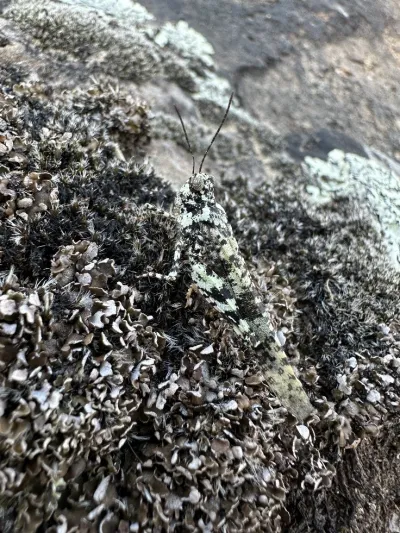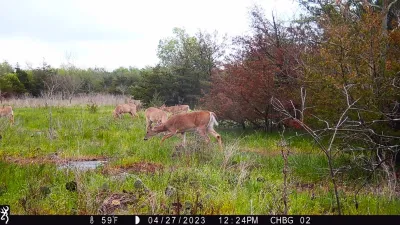Glades are small openings in forests where soils are shallow and the underlying bedrock is often exposed. The lack of canopy cover, shallow soil, and large rocks make glades a much harsher environment than the surrounding forest. Water doesn’t drain into soils quickly and can pool on exposed rock when it’s wet, leaving plants’ roots in standing water for days. In contrast, a few warm sunny days can suck seemingly every drop of water out of the system, and those same rocks that held pools of water instead absorb and radiate a lot more heat than a typical patch of ground. Because of this environmental variability, glades in the Ozarks are often characterized by plants more associated with the prairies found further west in the state. Plants such as Indiangrass, big bluestem, prickly pear, false aloe, coneflowers, and compass plant are just a few of the species that can be found in large numbers on healthy glades. The exposed rock is often covered in drought-tolerant lichens and mosses.
The animal communities found on glades follow a similar pattern to the plants and are the best places in the region to see species such as eastern collared lizards, roadrunners, brown tarantulas, upland sandpipers, and yellow-breasted chats. There’s even a grasshopper species that is so perfectly colored to blend into the lichen covered rocks that you can watch it land after being flushed and still take significant time for your eye to defeat its camouflage! While many of these species may be sparsely dispersed in edges and other openings in the surrounding forested landscape, they are concentrated in glades, making these areas important biodiversity hotspots.
While glades certainly provide habitat for many non-game species, they also have a strong pull on many of the game species we pursue. A diversity of wildflowers and prairie grasses will attract many species of bees, butterflies, and grasshoppers, but it is also a place where deer and elk can browse on an array of diverse foods with minimal search effort. The diversity of insects brings in hungry songbirds, but is also attractive to turkeys and quail, and the combination of bugs, bare ground, and herbaceous overhead cover makes for excellent brooding habitat to raise a clutch of poults or chicks.
Glades form in shallow soils where hardwoods have trouble establishing, but they require regular disturbance to keep Eastern redcedar invasion at bay. Ozark glades are often called cedar glades because they are so commonly ringed by the trees. Many glades have been overtaken by Eastern redcedar and not only does this cause these glades to lose much of their wildlife value, but they also become an issue for land managers as a wildfire risk. A combination of regular fire, mechanical clearing, and herbicides can be used to knock back Eastern redcedar. Wildlife Department staff have had success with summer burns targeting periods where the glade has dried out enough for the cedar to burn, but the surrounding forest fuels have enough moisture that flames won’t carry into the hardwoods with any vigor. Once set back to manageable levels, the same practices can be used to maintain the unique plant community. Once the overstory is cleared away, a glade can make a quick and dramatic comeback from the seed bank, and once the plants are back, it won’t take long for wildlife to respond.
The Wildlife Department has funded two research projects to look at the plant and animal communities associated with glades in Oklahoma and to attempt to find glades on private and public land that have been overtaken by woody encroachment. These projects have helped us better understand the wildlife species utilizing the glades, how effective our restoration and maintenance efforts are, and will hopefully lead to restoration of more glade habitat in the Oklahoma Ozarks. We thank these research teams for their work and for the photos provided for this article.
The ongoing inventory and mapping of glade habitat in the Oklahoma Ozarks is funded by the Oklahoma Department of Wildlife Conservation and U.S. Fish and Wildlife Service through Wildlife Restoration Program grant F22AF02332, with matching resources provided by Oklahoma State University.

